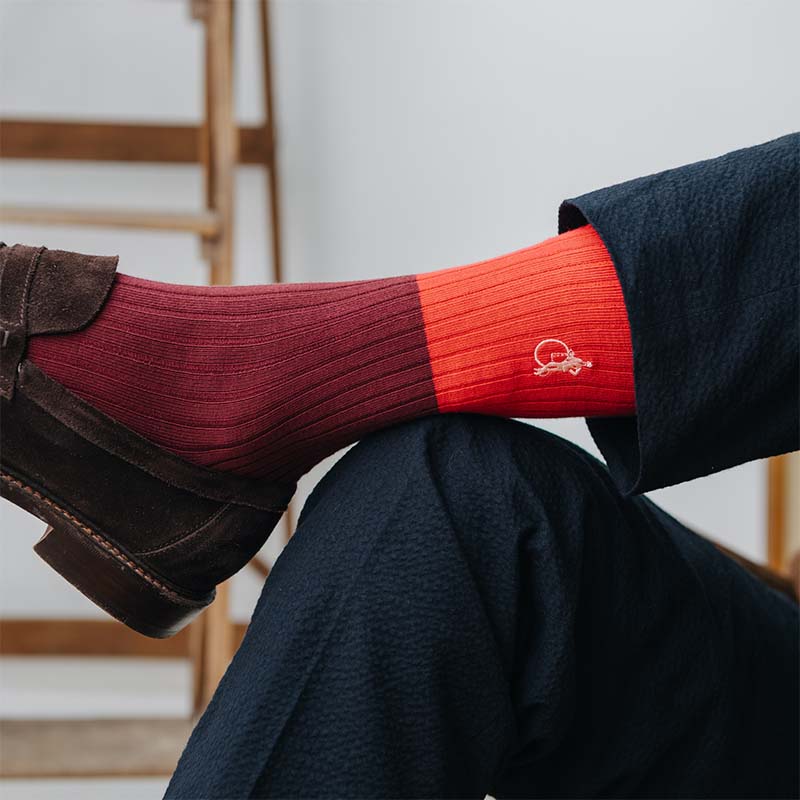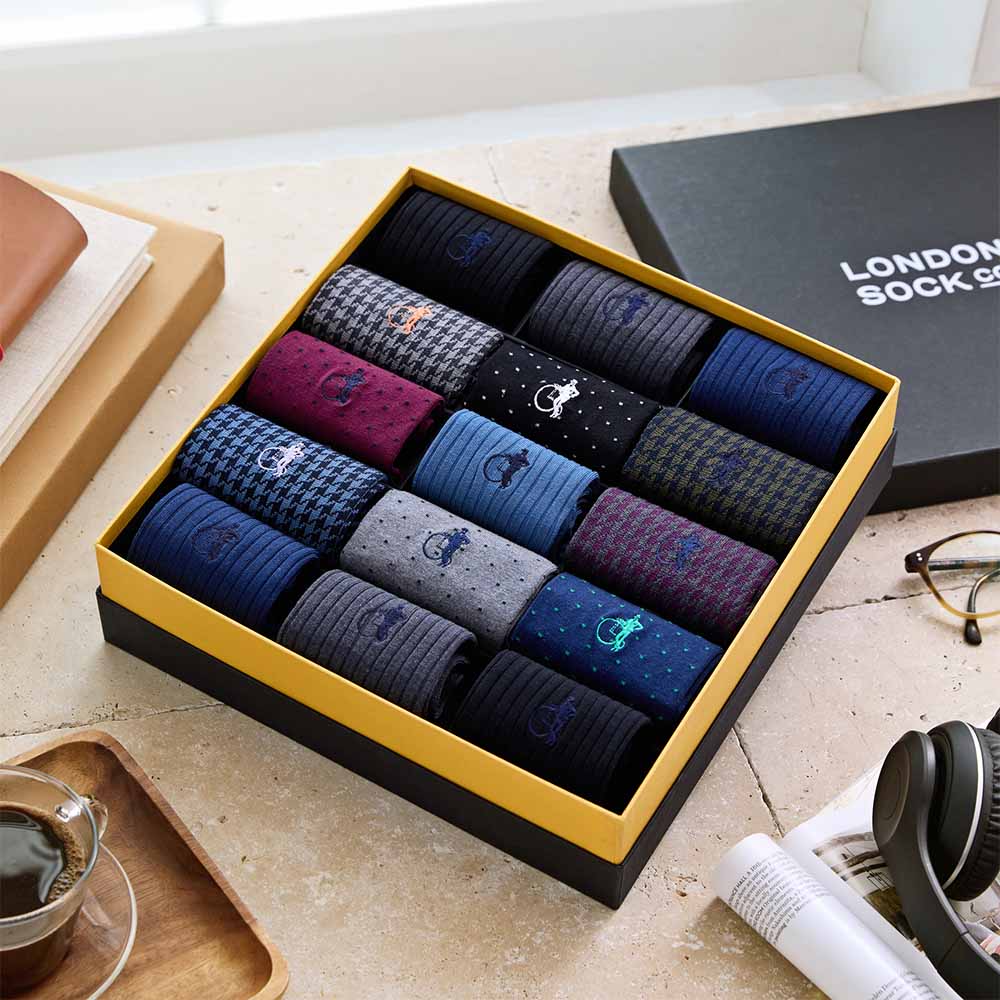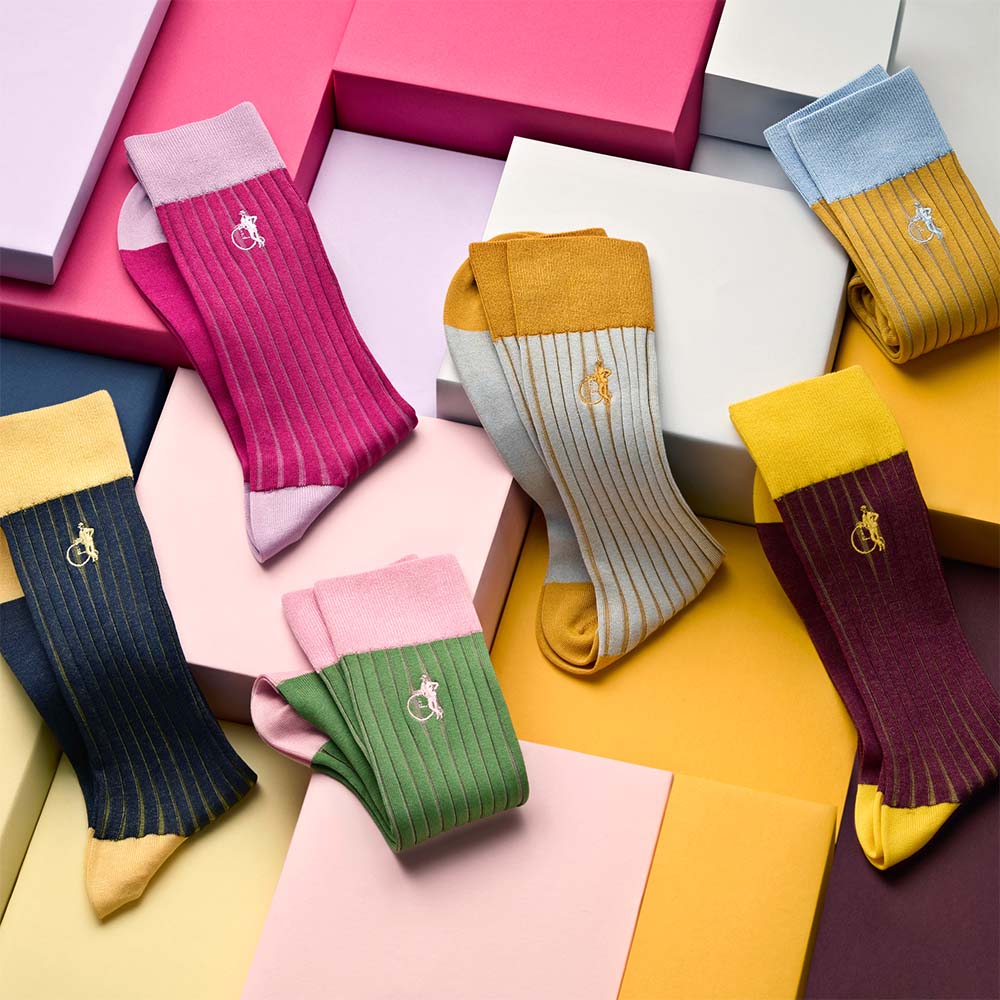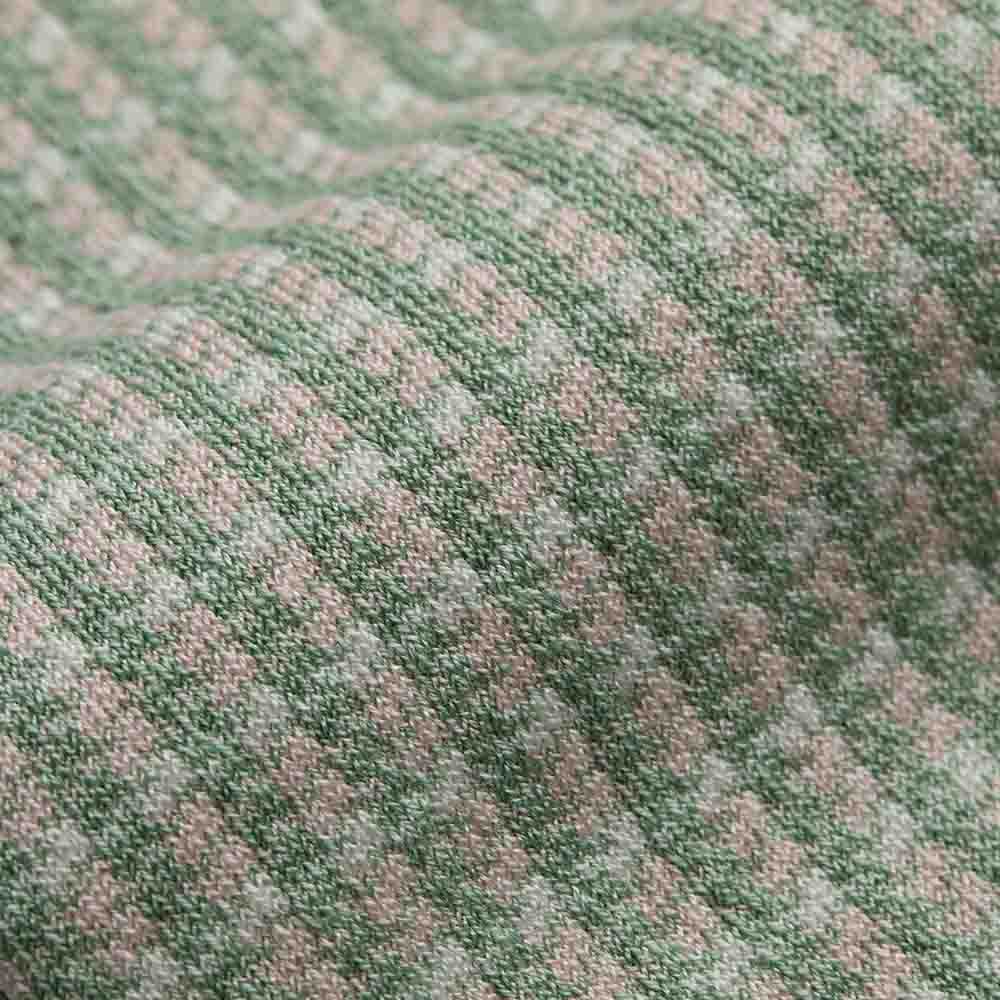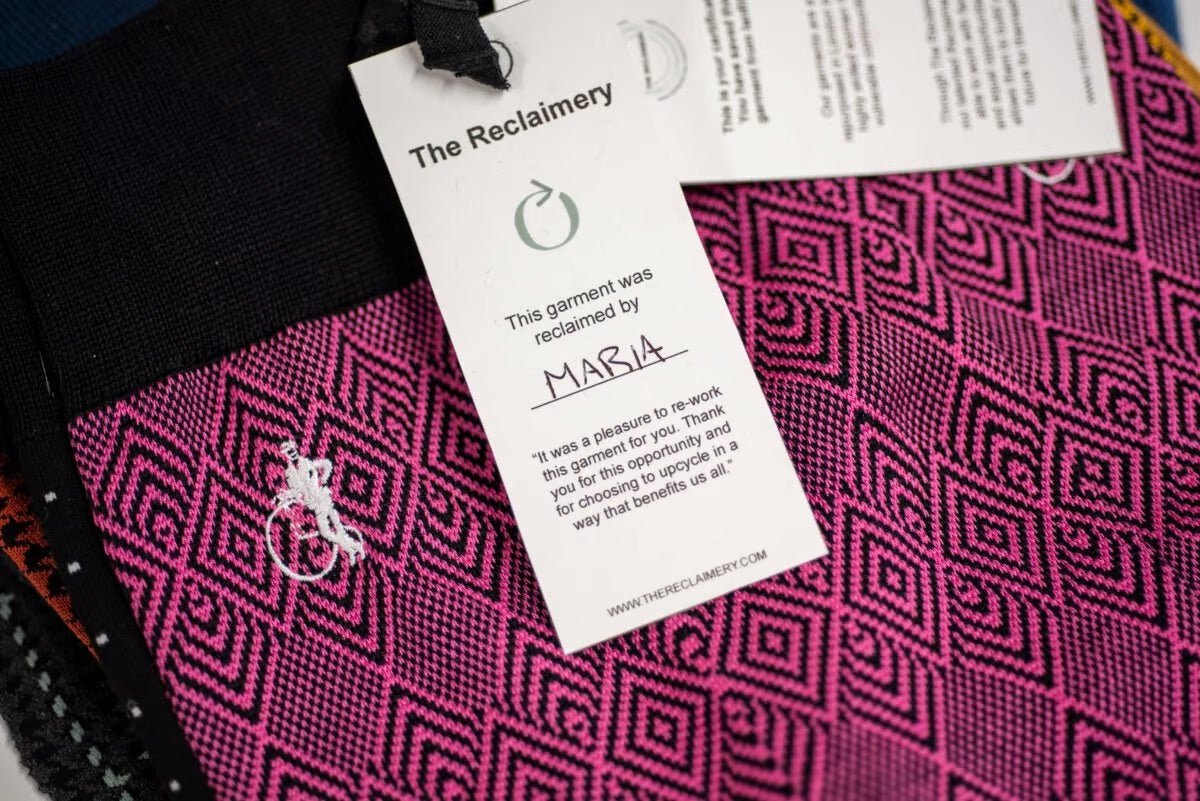
Lessons in laundry and managing microplastics
We’ve always believed in doing what we can to make the world a better place. And that extends to considering the impact that our socks can have on the planet – even after they are launched into ‘the wild’. Ever wondered how we select our materials? Or why we suggest washing your socks at 30°C? Heard the term microplastics and wondered what they are? Read on – we have the answers.
Buy better, wear longer
From day one, manufacturing socks that stand the test (ie. the steps!) of time has been fundamental to us. Socks may be a small thing, but we think that as much care should go into how they are made as any big ticket item. By using only the best materials, we are able to ensure that every pair of LSC socks last. Wear after wear, wash after wash. Not only will you be able to wear your favourite pairs of socks much longer, but the fact that you won’t be throwing holey pairs away as often means less textile waste being sent to landfills. And of course, when you do need a sock upgrade, you can send them to our Sock Amnesty to be upcycled by The Reclaimery into warm items for those affected by homelessness.
Managing microplastics
Our sock collections are made with a blend of natural materials, such as cotton, merino wool or cashmere, and man-made fibres such as polyamide so that we can maximise the stlaundry and managing microplasticsrength of the fabric and ensure a perfect fit for you. However, when washed, these synthetic components can unfortunately contribute to the pollution of our rivers and oceans by releasing microplastics.
What are microplastics?
Any plastic fragment smaller than 5mm – imagine the size of a sesame seed – is considered a ‘microplastic’. While these teeny particles can come from a wide variety of sources – like cosmetics, paint or even larger plastic items such as bags and bottles – it is estimated that 35% of the microplastics found in our oceans come from our clothes. Every time we wash a garment that contains a synthetic material, tiny plastic microfibres – thinner than a strand of hair – are drained through the washing machine and released into the waterways.
Why are microplastics an issue?
These microfibres, while really, really small, can have a rather devastating impact on the environment. According to a study published by the University of California, the volume of wash-related plastic microfibres released in a single day by a city the size of Berlin is equivalent to approximately 500,000 plastic bags.
The accumulation of microplastics in the water pollutes our oceans, spreading across the globe dispersed by the wind and the tides. When consumed by marine creatures like plankton and mussels, these toxic particles cause severe harm to their health. The effects even travel up the food chain – potentially reaching humans.
How can we prevent microplastics from being released?
So, how do we prevent microplastics from getting into our water systems and this chain of events from happening? As with many things, it is a little thing that can make a big difference. You can now find the amazing Guppyfriend washing bag for sale on our website. It has been especially designed as an easy and efficient way to make your laundry more eco-friendly. Simply place clothing containing synthetic fibres – like socks – into the bag before washing.
Its scientifically proven technology reduces the amount of plastic microfibres that are shed from the clothes placed in it by 86%. Plus the fibres that do break off are collected in the corners of the bag ensuring that they can be thrown safely in the bin. To top it off, with every sale of a Guppyfriend bag, money goes to support the wonderful work of the NGO Stop! Micro Waste. This organisation seeks to mitigate the impact of plastic pollution on our oceans through education and research. More good news? The Guppyfriend bag is itself recyclable, it protects your clothes when you wash them, and it keeps your socks in pairs.
Laundry Lessons
Ever wondered why the care instructions for our socks say to wash our pairs at 30°C and to avoid tumble drying? Not only will following these rules make your socks last longer (both the material and the colours) but it is also better for the environment.
Keep it Cool Wash
Lowering the wash temperature of your machine is an effortless way to make your laundry more eco-friendly without compromising its effectiveness. According to the Energy Saving Trust, washing your clothes at 30°C rather than higher temperatures will reduce the amount of energy used in a year by approximately 40%. You’ll be contributing to a significant decrease in electricity consumption while ensuring that the colours of your LSC pairs stay as vibrant as ever.
Always Air Dry
Hanging your clothes to dry instead of tumble drying them is another great way to reduce the amount of energy used for your laundry. A tumble dryer uses even more electricity and resources than a washing machine. Additionally, the heat that clothes are exposed to during the tumble drying process can damage the fibres of the garments. It is best to hang your socks to protect their fabric and avoid any thinning or loose threads.
Research on the carbon footprint of various clothing items shows that between 65 and 75% of the carbon emissions that occur throughout the life cycle of a garment are related to its use phase. This includes washing, drying and ironing. By following these recommendations, you can minimise the environmental impact of your clothes and join us in our pledge to drive positive change one step at a time.
